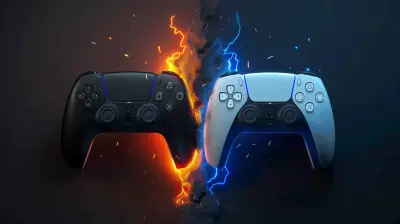Realism in Horror Games: Why It Makes Them Scarier
26 April 2025
Do you remember the first time a horror game genuinely made you pause, questioning whether or not you could continue? It wasn’t just about the jump scares or the creepy soundtrack, was it? It was that gnawing sense of realism—the feeling that, "Wow, this could actually happen." Realism in horror games pushes the boundaries of what we perceive as entertainment and thrusts us into an immersive nightmare, where the lines between fiction and reality blur just enough to make us check under the bed before we sleep.
But what exactly is it about realism in horror games that cranks up the terror dial? Why does it make them, well… scarier? Let’s grab our flashlights, keep the volume manageable (because we’re totally not afraid, right?), and dive into this eerie rabbit hole together. 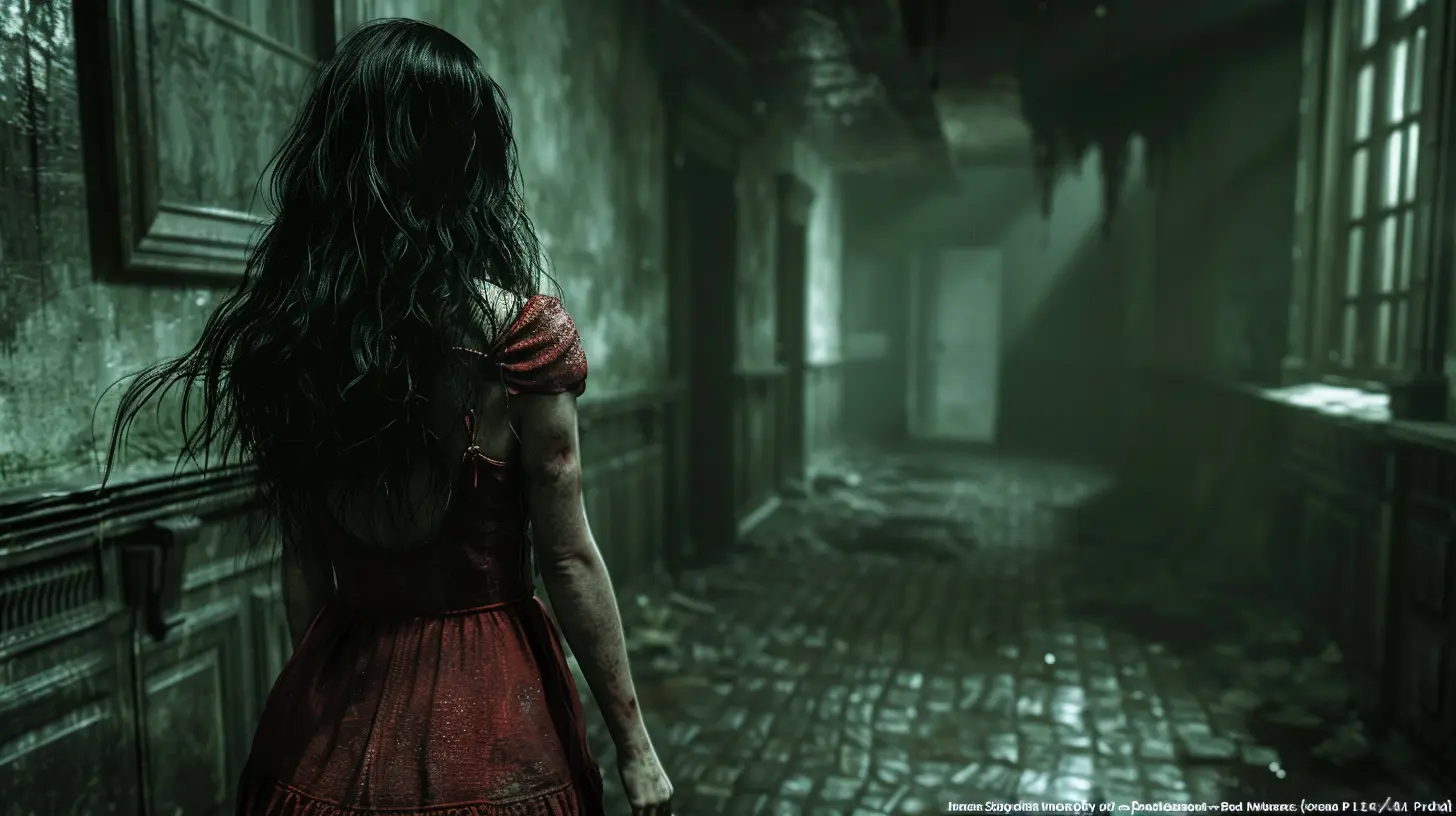
The Psychology Behind Horror and Realism
Let’s start with a quick brain snack: humans are wired for survival. Our brain’s fight-or-flight response kicks in whenever we perceive a potential threat. That’s why a shadow in the corner of your eye might send shivers down your spine before you realize it’s just your coat rack.When horror games look and feel realistic, they trick our brains into thinking, “This could be an actual threat.” Hyper-detailed visuals, realistic mechanics, and lifelike audio dig deep into those primitive parts of our minds. Suddenly, we’re not just playing a game—we’re living it. It’s no longer "Oh no, a digital zombie," but "Get that thing away from me before it bites my face off!" 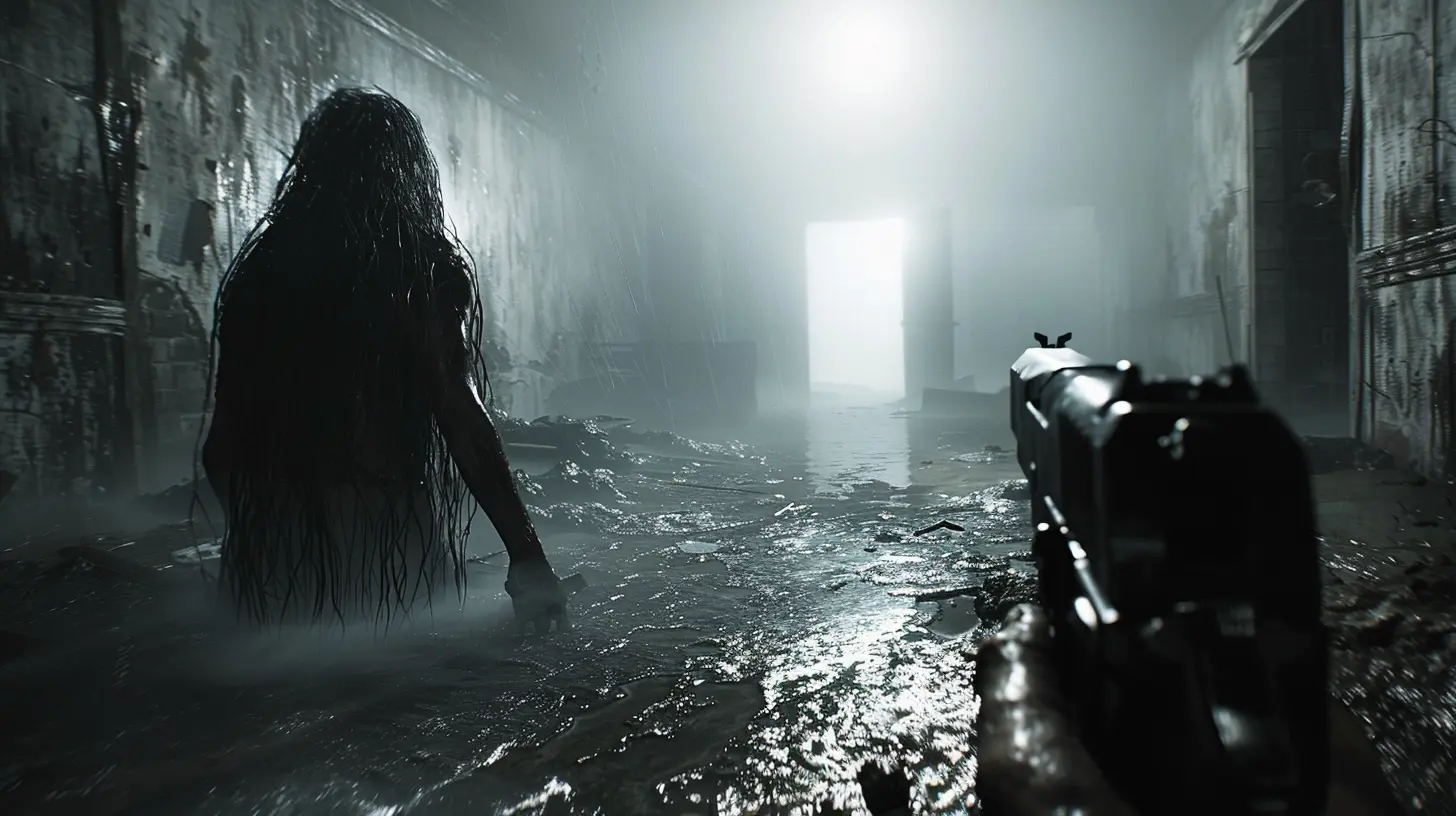
Realistic Graphics: Are We Sure This Isn’t a Movie?
Remember how mind-blowing graphics were back in the early days of gaming? Yeah, looking at them now is like watching a potato trying its best to resemble a human. But with today’s technology—thank you, ray tracing and 4K resolutions—horror games have become eerily lifelike. Take Resident Evil Village, for instance. The detail in Lady Dimitrescu’s castle or Ethan’s frostbitten fingers isn’t just eye candy—it’s an anxiety-inducing feast of realism.When everything looks hyper-realistic, it becomes easy to immerse yourself—and that’s when the scares hit differently. The scratches on the walls, the flickering candlelight, the shadows that might (or might not) move... they spark your imagination. And we all know that nothing is scarier than the horrifying mental images we conjure up ourselves.
Lighting: Where Shadows Are Equal Parts Beautiful and Terrifying
Lighting deserves its own shoutout because, let’s be real, it’s like the best supporting actor in every horror game. Dynamic shadows and dimly lit corridors mess with your mind. You’re constantly second-guessing—“Is that just a shadow, or is something waiting for me?” And the answer is usually yes. Yes, there is something waiting for you.Sound Design That Chills You to the Bone
Close your eyes and imagine you’re playing a horror game. You’re walking down a pitch-black hallway, holding a feeble flashlight. It’s dead silent, except for the creak of your own footsteps and… was that a faint whisper behind you?Realistic sound design is the MVP of immersion in horror games. Developers know how to mess with your head by throwing in subtle sounds—footsteps, heavy breathing, distant screams—that make you feel like you’re being watched. Games like Outlast and Dead Space have mastered this craft, creating an audio experience so haunting that even silence becomes deafening.
Have you ever been so scared by a sound in a game that you paused it just to collect yourself? Yeah, same. 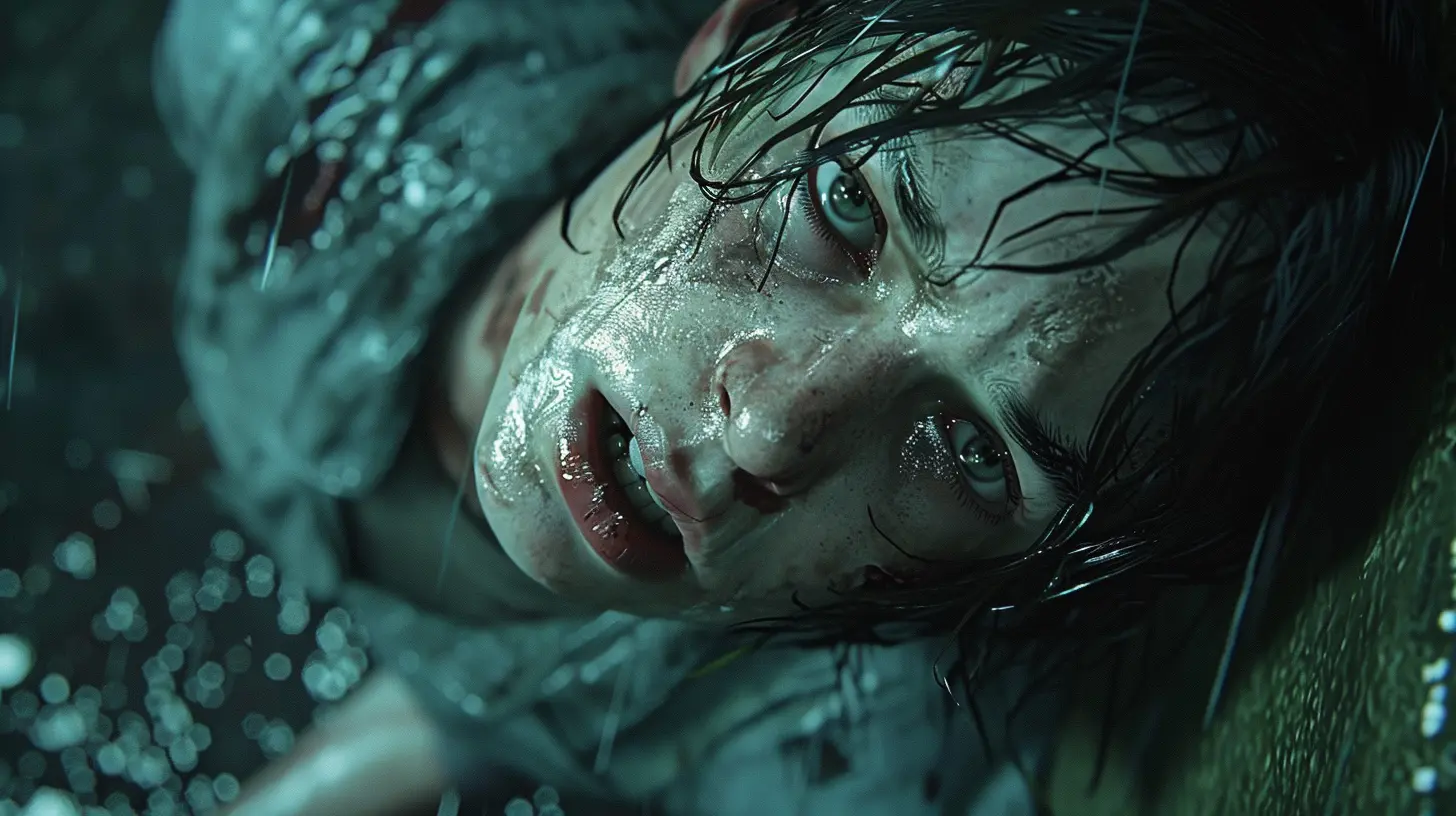
Gameplay Mechanics That Hit Too Close to Home
Let’s talk about the mechanics for a second. Realism in gameplay isn’t just about how good things look—it’s also about how they feel. For example, imagine a game where you have to manually reload your weapon under pressure, or your character struggles to run when they’re injured. These small details mimic real-life limitations, and suddenly, you’re not the all-powerful hero anymore.Take the Amnesia series. You’re not some super-soldier blasting away at monsters like it’s your job. You’re just… a guy. A nervous, normal guy with no weapons, trying to survive. That vulnerability makes the fear hit differently. It’s not just surviving the horror—it’s surviving as a human being.
Decision-Making Under Stress
Realistic games are all about putting you in the driver’s seat—and making you pay for your choices. Do you sneak past the terrifying monster, or risk making noise by running for it? Do you hoard your health kits, or use one now and pray you won’t regret it later?This level of realism in decision-making doesn’t just raise the stakes—it yanks them out of the ground and smacks you over the head with them. Your choices have weight, and the consequences? Oh, they’ll keep you up at night. 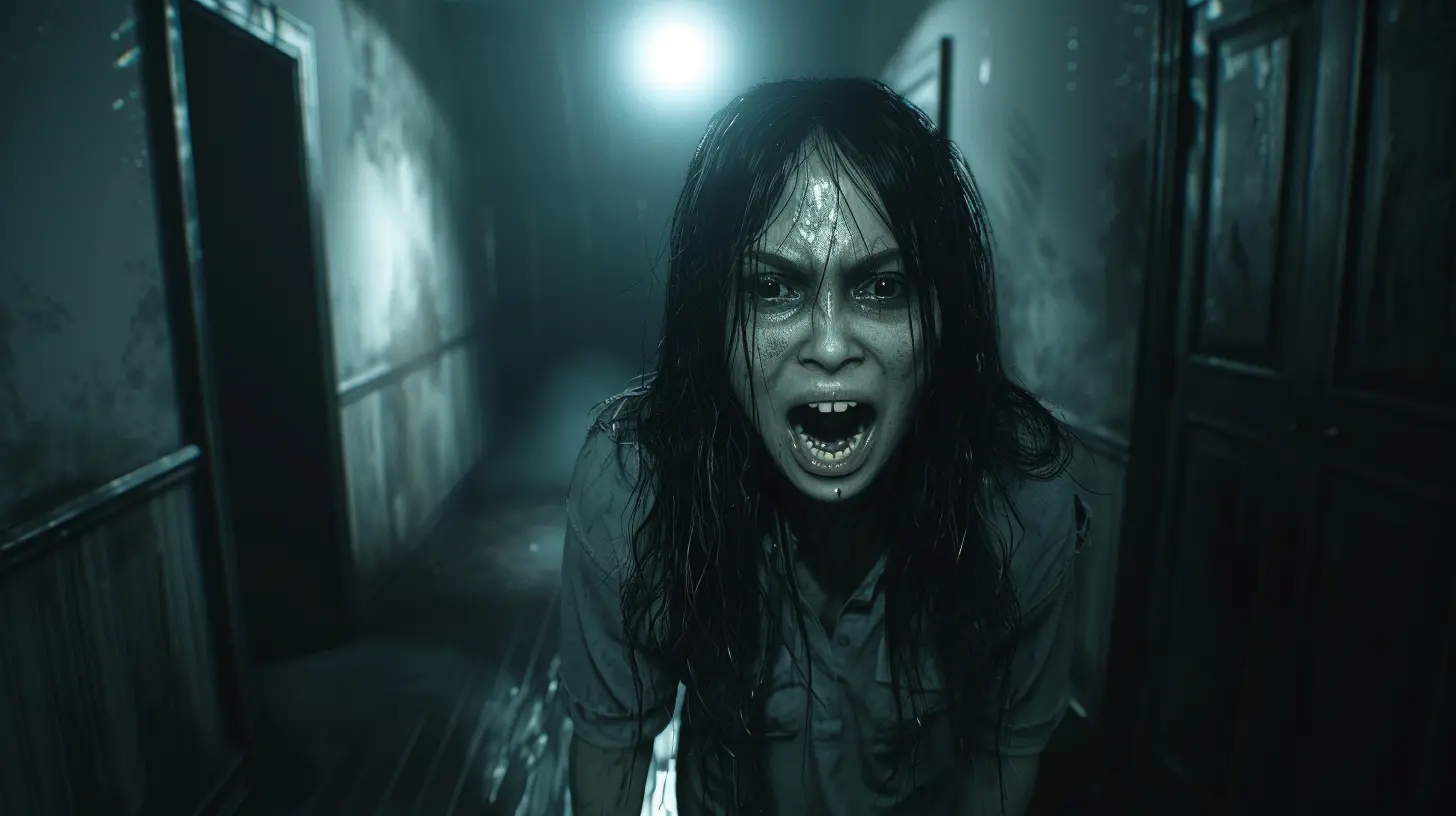
Why Realism Makes You Care
You know what’s scarier than monsters? Caring about the characters they’re trying to kill. Realism doesn’t just make the environment believable—it makes the people believable, too. If you’ve ever found yourself screaming, “Don’t go in there, you idiot!” at a game character, you know what I’m talking about.When characters feel human, with flaws, emotions, and personalities, you can’t help but get attached. And when those characters are in danger? Forget it. You’re not just scared for yourself—you’re scared for them. This emotional investment amplifies the fear factor tenfold.
The Uncanny Valley Effect: When Realism Gets Creepy
Here’s a fun (read: terrifying) concept: the uncanny valley. This is the idea that as something becomes more human-like, it becomes more relatable—up to a point. Once it gets too realistic but still not quite right, it becomes unsettling.Horror games often dip their toes (or dive headfirst) into the uncanny valley. Think of dolls that look just a little too lifelike, or NPCs with almost human expressions. The result? A creepy, skin-crawling sensation that stays with you long after you’ve shut off the game.
VR: The Final Frontier of Realism
If you thought horror games were terrifying on a screen, wait until you try one in VR. The level of realism in virtual reality horror games is on another level entirely. You’re not just controlling the character—you are the character.Titles like Resident Evil 7 VR or The Exorcist: Legion VR put you in the environment. You’re walking through the haunted hallways, hearing every creak and groan in 360-degree surround sound. And when something jumps out at you? Well, good luck not falling off your chair.
Why Do We Even Do This to Ourselves?
Here’s the million-dollar question: if realism in horror games makes them so much scarier, why do we keep playing them? Are we gluttons for punishment, or is there something else at play?The answer lies in the thrill. Realistic horror games give us a safe space to face our fears, test our limits, and laugh nervously when we survive a particularly tense moment. It’s like riding a roller coaster—terrifying in the moment, but exhilarating once it’s over.
Closing Thoughts: When Fear Feels Too Real
Realism in horror games isn’t just a gimmick—it’s a tool that developers use to craft unforgettable, heart-pounding experiences. From lifelike graphics to immersive sound design, these games tap into our most primal fears and bring them to life in ways that no other medium can.So the next time you find yourself gripping your controller, heart racing, and palms sweating, remember: that’s the power of realism in horror games. It’s not just about scares—it’s about making those scares feel real. And honestly? That’s what makes them so addictive.
all images in this post were generated using AI tools
Category:
Realism In GamesAuthor:

Lana Johnson
Discussion
rate this article
4 comments
Bella McAdoo
Realism in horror games? Please! If I wanted real-life terror, I'd just check my bank account. Give me monsters, not mortgage payments!
May 12, 2025 at 2:25 PM

Lana Johnson
While real-life fears can be daunting, the blend of realism in horror games enhances immersion and allows players to confront their anxieties in a controlled environment, making the experience both terrifying and cathartic.
Icarus Whitley
Great insights! Realism in horror games truly amplifies the tension and fear, making players feel deeply immersed. It’s fascinating how the details can evoke such strong emotions. Looking forward to more discussions on how this shapes our gaming experiences!
May 10, 2025 at 4:05 AM

Lana Johnson
Thank you! I'm glad you found the insights valuable. Realism indeed heightens the emotional impact and immersion in horror games. I look forward to more discussions on this fascinating topic!
Lanae McLean
Realism enhances immersion, amplifying fear and emotional connection in horror games.
May 3, 2025 at 4:58 AM

Lana Johnson
Absolutely! Realism immerses players deeper, making the horror feel more authentic and heightening emotional responses.
Bridget Benton
Realism amplifies tension in horror games by immersing players in believable scenarios, heightening fear through relatable experiences and emotional stakes.
May 1, 2025 at 2:53 AM

Lana Johnson
Thank you! I completely agree—realism truly enhances immersion and emotional engagement, making the horror experience far more intense and impactful.

